Scientific Facts
| Common Name: | European rabbit, coney |
| Scientific Name: | Oryctolagus cuniculus |
| Life Span: | 9 years |
| Size (Adult): | 3.3 to 3.9 inches |
| Weight (Adult) | 2.6 to 4.4 pounds |
| Habitat: | Fields, meadows, agricultural areas |
| Body Shape: | Small, compact |
| Country of Origin: | Spain, Portugal, and western France, northwest Africa |
Physical Description
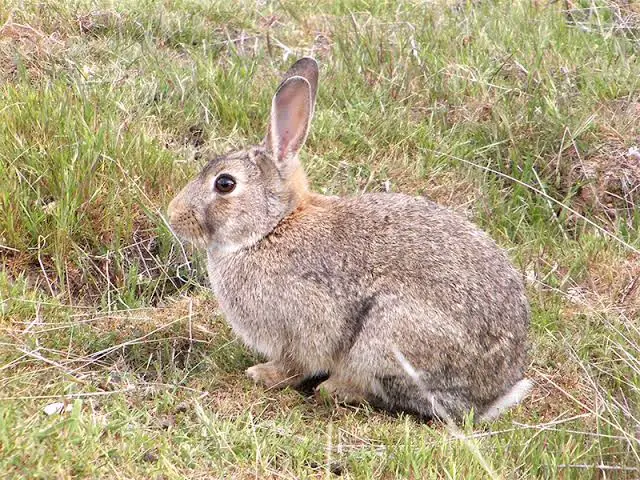
The European rabbit is a species of wild rabbit that is native to countries located in southwestern Europe. It can be seen in other areas of the continent and other parts of the world because of being introduced there by accident. Large populations of European rabbits can cause devastating effects on biodiversity, but recently, there has been a decline in its numbers, causing the decline of predators like the Iberian lynx and the lovely Spanish eagle.
The coney is one of the most invasive species and is present in almost all countries in the world except for Antarctica. It is the source of many problems in the environment and various ecosystems. In Australia, the Feral European rabbits have dramatically impacted the ecosystem due to the lack of natural predators of this rabbit.
The European rabbit will spend most of its time burrowing and creating holes called warrens. It will spend most of its time in these holes and will only come out to feed.
The European rabbit is smaller compared to its cousins, the brown hare, and the mountain hare. It lacks the black ear tips and has smaller or shorter legs. An adult can be as big as 16 inches and weigh up to 4.4 pounds. The hindfoot is as large as 3.9 inches while the cute ears are up to 3.0 inches from the occiput.
The size and the weight of coneys will vary from the food that it gets from its environment and the quality of the food as well. Rabbits that live in light soil with no other food but grass can be smaller compared to those found in highly-cultivated farmlands with roots and clover.
Pure coneys weigh 11 pounds and even heavier. There was one large specimen that weighed 6.2 pounds, which were caught in Lichfield in 1890. Compared to the brown hare, the male coneys can be heavily built than the female. They have shorter penises and have no true glans and baculum.
Coat and Colors

The fur of the European rabbits are greyish-brown but can be varied depending on its natural habitat. It has guard hairs that are banded and are brown and black or sometimes grey. The nape of the rabbit’s neck and the scrotum has reddish fur. It has a brown chest patch while the rest of the fur underneath are grey or white.
You will find a white star-shaped fur on the forehead of young rabbits, and these disappear when these become mature. These have long and black whiskers, and their feet are fully-furred and are buff-colored. This rabbit’s tail is brown with a white underside. This white color in the tail becomes prominent when the rabbit escapes danger. Experts also think that their tails act as signals for other coneys to run.
European rabbits molt, and this happens in March. The process starts on the face and then gradually spreads to the back. The fur on the underside of the rabbit will be completely replaced in October to November.
Color variations also exist in European rabbits. You will find some specimens with light-sandy fur, dark grey to black fur as well. The color variation is due to the number of guard hairs relative to their regular fur. Albino European rabbits are rare.
Subspecies
There are six recognized subspecies of the European rabbit since 2005:
- O. c. cuniculus – Common rabbit discovered by Linneaus in 1758. This is found in most of Europe and introduced to New Zealand, Australia, Chile, Africa, and several pacific islands.
- O. c. algirus – Iberian rabbit, discovered in 1858 and is native to Portugal, Spain, North Africa, Mediterranean and Atlantic islands.
- O. c. huxleyi – the Mediterranean rabbit was derived from the O. c. cunigulus with a variety of sizes. This was introduced to the Atlantic islands, Desertas, Salvage Islands, and the Azores.
- O. c. cnossisus – the Cretan rabbit was discovered in 1906 and is found only in Crete.
- O. c. habetensis – Camargue rabbit was first noted in 1917 and is native to Camargue and southern France.
- O. c. habetensis – African rabbit was first seen in 1923 and is native to Morocco and Western Sahara.
Fast Facts
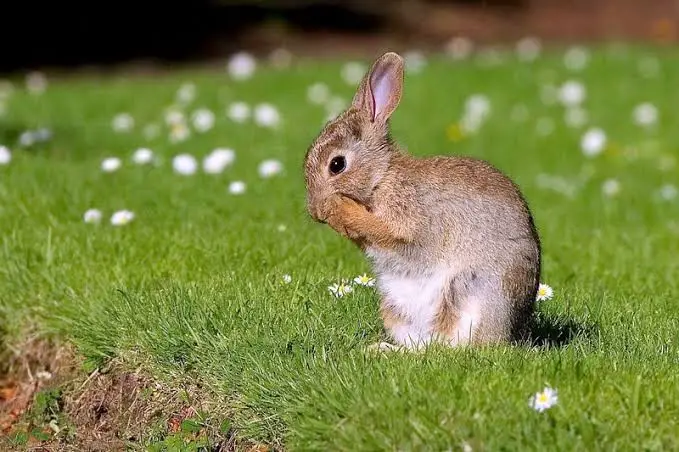
The name coney or cony was first mentioned during the 13th century, which referred to the animal’s pelt. It soon meant the adult rabbit while the word “rabbit” means the young. The home of European rabbits is called the warren or the cony-garth. The term “warren” is from an old English word wareine. The root world is warenna, which means a preserve and soon was used to specifically refer to the enclosure for rabbits and hares.
History of the Breed
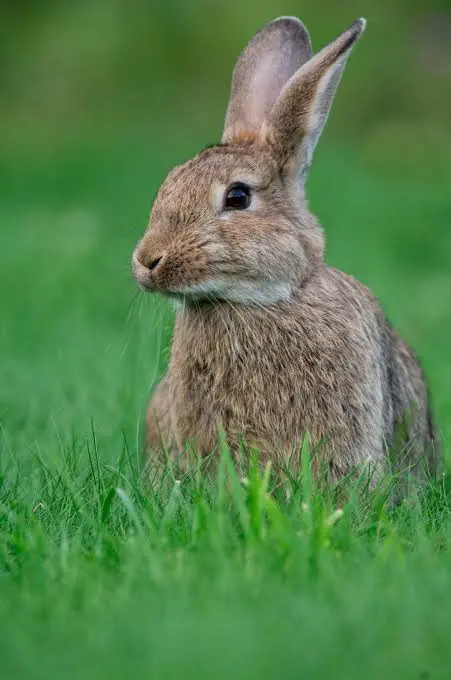
The coney was well-established in many areas of Europe and was introduced to many different countries around the world, but none can compare with the devastation that this caused in Australia. The earliest times when the rabbit was first introduced in Australia were in the 1800s. These were domestic rabbits that were bred unfit for feral life.
Wild rabbits were introduced to the country in the middle to the late parts of 1800 in places like Western Australia, South Australia in Kapunda, and Victoria in Geelong. Large populations were also brought to the Shoalhaven River in New South Wales and in Woody Island in Queensland.
There were seven rabbits released at Barwon Park in Geelong in 1859, and just seven years after, more than 14,500 rabbits were killed in the same park. In just a few years, the European rabbit has become very established in the western parts of Victoria, South Australia and around Sydney in Flinders Ranges.
A huge infestation ravaged parts of South Australia and Victoria in 1879, and all means to control the infestation failed. In the 1920s, rabbits have affected most of the southern portions of Australia and were in very high numbers almost everywhere. The rate of invasion was from 10 to 15 kilometers per year in areas where there were wet forests and more than 100 kilometers a year for rangelands. This invasion was the fastest of any colonizing mammal on the planet.
Fun Facts

The European rabbit is the only species that has been domesticated out of all 305 rabbit breeds around the world. This species may be treated as food, pet, or a pest depending on where the animal is and its role in the environment.
Experts said that it was first kept in ancient Rome where feral rabbits were referred to as laurices and were known to be delicacies. This has been refined to a wide variety of rabbit breeds since the Middle Ages.
Domesticated rabbits are larger than feral or wild rabbits. Selective breeding has produced all kinds of sizes, including dwarf and giant rabbit breeds. These have been kept as food or as pet animals in many countries around the world.
Domesticated rabbits have a number of color variations in their fur, and it is prized for its softness as well. Angora rabbits are the best examples of domesticated rabbits used for their fur. The fur of Angoras is spun to yarn. Another one is the Rex, which also has a smooth velvet coat that has a variety of sizes and colors.
Life History and Behaviors

Whether you want to have a pet European rabbit or you just want to get to know this breed more, it is important to understand its natural behavior. Most of these behaviors are seen in the wild and also with captive rabbits.
Sharing warrens
European rabbits live in burrows together with 2 to 10 rabbits. Experts believe that there is a higher breeding success when rabbits live in smaller groups. This is something you may want to take note of if you want to breed European rabbits.
Territorial behavior
Territorial behavior and aggression can be due to the maturation process of the rabbit, and this behavior can help in the survival of the individual and the rabbit population. Females are more territorial than males, although areas, where females are located, are not defended from their aggressors.
Usually, territories are marked by dungs, and the size of a home range may vary depending on the habitat, food, cover from predators, and breeding sites. A warren is small, around 0.3 to 0.7 hectares of land. Males may have larger warrens compared to females when low population density and abundance of food exists.
Prefers to stay home
The European rabbits prefer to stay at home and rarely strays far away from its burrow. It may move 50 meters, but it can reach 500 meters if there is an acute change in the environment, such as a harvest in agricultural land. Rabbits that are found in lands where predators exist may move three times farther than their burrows compared to rabbits that are in areas where there are no predators and management.
Stable social groups
European rabbits live in stable social groups, and the group is centered on females. The members can share access to the different areas of the burrow. Looser rules are seen in areas where the burrow construction is easier to do.
Dominance hierarchy
There is a dominance hierarchy present in both males and females. Among bucks, the status is determined by the male’s access to does. Dominant bucks usually father most of the offspring in the colony. The most dominant female has access to the best nesting areas. Females may compete for this area, sometimes even leading to serious injuries and death. Subordinates use single-entry breeding sites that are located not far from the warren, and this makes them more vulnerable to predators like foxes and badgers.
Reproduction behaviors
European rabbits have several mating behaviors. The dominant male and female practice polygyny, while lower status rabbits are monogamous. Females will signal the male if she is ready to mate and usually by placing a scent on the burrow or on inanimate objects. More on the reproductive behaviors of European rabbits in the following sections.
Care

Captive European rabbits should be provided with the best care. Remember that each rabbit species may look different, but their needs are mostly the same as all other rabbit breeds.
Give your pet the proper diet, companionship, and the right housing. The main food of captive rabbits is hay. This is the bulk of their diet. You can also give pellets designed specifically for rabbits as well as needed vitamins and minerals for proper growth and development. Vegetables, fruits, and seeds may also be provided.
Make sure that your pet has easy access to water. Unlimited fresh water and hay should be nearby. Hay is very helpful in keeping their digestive tract regular and healthy, and a quality pellet is also needed for nutrients. Provide water daily, especially during warmer or hotter times of the year.
Europeans are the best pets for both children and adults because of their domesticated and docile nature. But despite this, you must monitor your rabbits closely for any possible signs of illness. Also, you must interact with their pets daily. An owner who spends more time with their pets is likely to earn their trust. This is very important, especially for a rabbit that’s from the wild as the European rabbit.
Supplies and Cages
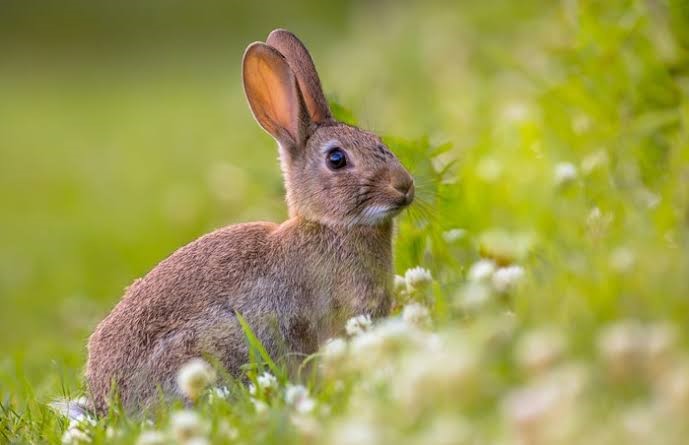
There are a different cage or enclosure designs you may consider, but the home of your Europeans should have a wire enclosure and a plastic bottom. The bottom must have soft bedding so that it is comfortable for your rabbit.
Since coneys are small, there is no need to prepare a bigger enclosure if you want to house more rabbits. You can also install rabbit hay feeders that attach to the side of the enclosure. This will allow your rabbit to pull hay out and chew when they are hungry or bored.
For cage bedding, use aspen or wood pellets. Pelleted horse bedding is also a good form of bedding. Avoid giving them cedar or pine since these are unable to remove smell and odors. The cage may be cleaned with safe cage cleaner or white vinegar. Avoid bathroom cleaners, as well as other cleaning materials that may be dangerous to your pet.
Daily spot cleaning of their bedding is recommended, and you must replace this at least once a week. This will get rid of feces, which is important in keeping both the rabbit and its home, fresh and clean. Cleaning the cage is not just good for the hygiene of the European rabbit, but also for the owners, as it reduces any annoying smells.
Europeans engage in self-grooming and social grooming. They will groom themselves and each other as a sign of fondness. They are also crepuscular, which means that they are active in daytime and evening. Their feedings should be provided in the evening.
They sleep 8 hours a day, and thus, they need a quiet place to rest and recuperate at night or as they take a nap by the day. Also, these rabbits are born without fur, and with their eyes closed, so it’s important to have a well-protected and well-padded cage to secure baby rabbits. Finally, Europeans love living in groups, which means that you may want to consider a larger enclosure and more supplies to care for more coneys.
Indoor vs. Outdoor Cage

You can place the cage of your rabbits indoors or outdoors but do consider the following pros and cons. Rabbits that reside indoors have longer lives, and are more social and happy as they get to play with their owners as well as their cage mates.
On the other hand, rabbits that live outdoors are usually skittish and are vulnerable to weather changes, temperature, pests, and other complications. But, they have plenty of room to play, jump, and run around.
If you decide to keep your rabbits inside, but don’t have enough space, you can use an outdoor cage or fencing. Outdoor cages are easier to clean and give your rabbits more room for playing and running around.
And no matter where you want to keep your rabbit, keep in mind that this should be away from direct sunlight and from moisture. The cage should also be well protected against predators, including domesticated cats and dogs.
Health Concerns

European rabbits are prone to all types of diseases that are common among rabbits but don’t have any specific illnesses unique to them. Therefore, you must always check for possible signs of illnesses. Your pet must also receive standard vaccinations. A vet can help you with vaccination schedules and will also determine the overall health and wellness of your pet.
If you have a new rabbit, quarantine this first on a separate cage to ensure that it won’t spread any disease or pest to your other rabbits.
Expert breeders also suggest taking note of digestive system problems, especially in baby rabbits. Check for enteritis, bloat, and gut stasis in rabbits that are less than 8 weeks old. Also, monitor for ear or fur mites, fleas, and ticks. This can be due to poor hygiene, husbandry, and pest management. A new captive bred baby rabbit may also harbor these pests, so it’s best to quarantine them.
Remember the following ill-health signs like lack of appetite for eating, not drinking, nasal and eye discharge, diarrhea, lack of energy, walking imbalance, seizures, and other symptoms. Take your pet to the vet if you notice any of the following.
De-worming is also recommended for Europeans; even captive-bred rabbits can harbor pests in their gut. It is a major concern and needs to be completed in the spring and fall. Use a pea-sized amount of de-worming paste and put it in their mouth. The rabbit will gladly lick it and swallow the paste. This is good for a few months, and you need to dose your pet once more before the first dose expires.
Spaying or Neutering
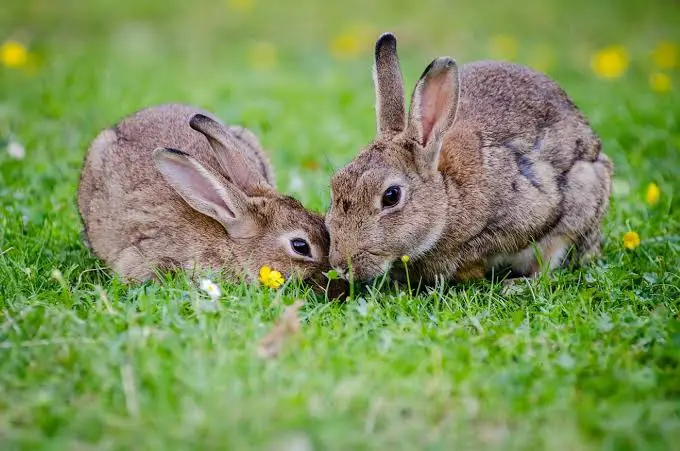
Spaying and neutering are ways to control the rabbit population. This should be done while your rabbits are still at a young age. Most veterinarians wait until rabbits reach six months of age to observe the safest practice on spaying.
Some say that the bucks must be neutered at a young age or as young as three months to prevent an aggressive attitude. But experts recommend that bucks are naturally unaggressive, and thus, early spaying or neutering should not be done.
Take your pet coney to the vet regarding the best practice on how to care for pre and post-spayed or neutered rabbits.
Teeth
One of the most important parts of taking care of Europeans is the regular checkup of their teeth. This makes sure that their teeth do not overgrow and hurt them. Maintaining their teeth is one of the reasons why rabbits chew so much. Their teeth usually grow too long, and when this happens, the teeth can grow right through the mouth and jaws. This could become very painful for the rabbit. With this in mind, a diet with more hay is recommended as it naturally files down the rabbit’s teeth while the rabbit chews. You can save yourself from an expensive vet and dental bills when you keep a close watch of your rabbit’s teeth.
Grooming

Europeans need regular grooming despite their very short fur and despite the ability to self-groom. Do this at least once a week. You may even do it more when they are in the molting period to prevent wool blocks. The rabbits may ingest some fur, and this can block their digestive systems.
It is recommended to avoid bathing your rabbit because this can stress them. You may spot-clean using a damp towel if they are dirty. Always trim their nails every month, and monitor for overgrowth of their teeth. Provide a balanced diet to help them stay healthy and grow healthy, strong teeth even as adults.
Breeding
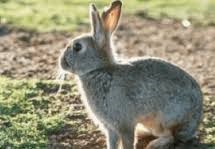
European rabbits should be at least 6 months before they can start breeding. The bucks can start younger, or when they are 4.5 months, though it is often best to wait until 6 months, so these are ready. For male rabbits, it is important to make sure that their testicles have dropped before waiting. A vet can check this for you.
Rabbis will signal that they are ready to breed by marking animals, inanimate objects, and their dens with an odoriferous substance from her chin gland. This is a unique process known as chinning. Males, on the other hand, can fight to the death during the breeding season.
A succession of rabbit litters is produced, but in places where there is overpopulation, pregnant females may lose all their embryos because of intrauterine resorption. After giving birth, the doe will make a separate burrow known as a stab or stop. This is constructed in an open field away from the main warren or burrow. These breeding warrens are a few feet long and have grass and moss for walls, and the doe may also use its belly fur to line the nest. The breeding warren will protect the babies from adult bucks and also from predators.
The gestation period of a rabbit is usually up to 33 days, while most of them do deliver around the 30-31st day. Before starting to breed, select a date that you want for birth, so that you can be at home to prepare the doe inside her nesting box. Plan ahead to ensure that you will be there for two months wherein the babies should be weaned from their mother, to avoid any issues from arising before these are completely weaned
European rabbits may conceive and give birth at any time of the year. During the hot months of summer, the babies may make the mother very uncomfortable and also consider that it is dangerous for the babies to be born in wintertime, as they are born hairless and helpless.
Remember that if the mother does not do well, the babies may also die. Choose spring and autumn for the best times for your female rabbit to get pregnant.
Female rabbits nurse their babies once every night for only a few minutes. The babies will suck hungrily, and after this is over, she will seal the entrance to the warren with soil and vegetation near it. European rabbit kittens are born blind, deaf, and naked. The baby’s ears do not gain the power of motion until it reaches 10 weeks of age. It will be able to erect it around day 13.
The rabbit eyes will start to open 11 days after birth, and on day 18, the babies will depart the burrow. Sexual maturity is at four months for males and does will breed in just three to five months. European rabbits are silent but may have two vocalizations.
It has a high treble sound or squeals similar to a piglet, which is produced when the animal is in distress. It can also emit a grunting sound, which is a sign that it is contented with its current situation. The grunts are like hiccups and produced while the mouth is closed.
Other Notes
Europeans will love chewing on things, and thus, captive rabbits must be monitored when you set them free inside your home or yard. These will chew on wooden furniture, wooden walls, wooden parts of your homes, and even electrical wiring if available.
To avoid these and possible accidents, give your pet hay or chew toys as well as their food. Make sure that everything that they eat and goes to their mouth have not been sprayed with herbicide or pesticides. These chemical preparations have dangerous toxins that can be harmful to your pets. It is important to be careful about giving just any kind of plant or yard clipping to your pets.
These rabbits should be kept in pairs for companionship. It has been observed that being with another rabbit contributes to its happiness and even letting it live a longer and more fulfilled life.
Take note that in the wild, European rabbits are very sociable and even interact closely with members of their colony. This is also something that happens with those in captivity.
Availability – Where to Get One?

European rabbits may be purchased from a local breeder or from a pet shop. Price may depend on whether you are getting one for a show or for a pet. Check reliable breeders because it is very important that you get a rabbit free from genetic disorders.
The price could be from $20 to $30 depending on the gender, size, and overall appearance. Ordering a pet online may be more expensive since you need to pay for handling and shipment. Also, it is best to adopt a rabbit from a local adoption center or from an association that looks for good homes for rabbits.
Do not ever take a wild European rabbit from the wild. These rabbits may have pests and dangerous illnesses that can harm other rabbits in your cage. Also, these are untamed rabbits that may have unpredictable behaviors. So whatever happens, pick only captive-bred rabbits?
How to Care for a European
Captive European rabbits are cute, lovable, and easy to train, and care is similar to that of other rabbit breeds. Take note that rabbit species may look different, but their needs are mostly the same. But it is best to talk to your vet in case your pet requires special attention or medical needs.
Give your pet the proper diet, companionship, and the right housing as their primary needs. The main food of captive rabbits is hay. You can also give pellets designed specifically for rabbits as well as needed vitamins and minerals for proper growth and development. Adding vegetables, fruits, and seeds is a good way to enhance your rabbit’s palate.
Make sure that your pet has easy access to water. So place unlimited fresh water and hay inside their cage. Hay is very helpful in keeping their digestive tract regular, and a quality pellet is also needed for nutrients. Remember to replenish their water daily, especially during warmer or hotter times of the year.
Europeans are the best for both children and adults because of their domesticated and cute nature. But despite this, you must check on your European rabbits closely for any possible signs of illness.
Regular, daily interaction is also important. Remember that an owner who spends more time with their pets is likely to earn their trust. This is very important, especially for a rabbit that is naturally from the wild. Also, take note of various coney behaviors because this is the best way to understand your rabbit. Never overlook any natural behavior because these are also present even in rabbits that are captive-bred.
FAQs
How do you know if a rabbit is in pain?
If you pick up a European rabbit and it creates a weird sound like it is in pain or makes a scratchy noise from its throat, then the creature may be in pain. Take your pet immediately to a vet for diagnosis and treatment for pain.
Will my European rabbit stay small forever?
Yes, these rabbits are small and will remain small. However, overfeeding may lead to obesity and may also cause health issues related to being overweight, so never feed your rabbit more than what is required. You must keep a diary of your pet’s diet and feeding time to avoid overweight problems.
Is it dangerous to be bitten by a European rabbit?
Yes, rabbit bites and scratches can be fatal because their nails can be dirty and may harbor diseases like rabies and tetanus. If you are bitten or have been scratched even by your pet rabbit, visit your doctor for treatment.
How much does a European rabbit cost?
A European rabbit costs around $20 to $30 depending on the gender, size, color, patterns, and the purpose of the rabbit, for pet or for show. It is very expensive to buy a European rabbit from an online store than from a local dealer because of the price of shipment and delivery.
Can you feed European meat?
No, European will only eat fruits and vegetables and occasionally insects and larvae. But you cannot feed this animal meat. Make sure that the products it eats are organic to prevent toxins from affecting your rabbit’s health.
How to rabbit-proof your home?
To rabbit-proof your home, cover openings on walls and on floors, remove anything that the rabbit can reach and destroy. Use a fence to cordon off places that it is not allowed to enter, like the kitchen or basement. You can also reverse the technique and just use the fence to surround the rabbit so it will stay in this area only.
What are the best toys for a European rabbit?
Coneys can easily get bored and may need constant stimulation. You can offer toys like small bouncy balls, cardboard boxes, rolled paper, and many more just make sure that the toys are safe and don’t have any toxic chemicals that can harm your rabbit.
Do European shed their fur?
European can molt, and this usually starts from the tip of the head, down to the neck, and lastly to the body and limbs. Shedding happens during the warm months, so use a brush to collect hair, and this also prevents the rabbit from eating his own hair, causing intestinal blockage.
Can European eat fruit?
Yes, a European rabbit can eat fruit and vegetables. Make sure to give only organic fruits and vegetables since these do not contain pesticides and herbicides that can affect your rabbit’s health.
Why give European rabbit hay?
Hay is an important part of a captive rabbit’s diet. This is important in maintaining regular bowel movements and will make the rabbit teeth short by grinding and chewing on hay. The grinding action of its teeth as it chews keep teeth healthy and trim.
What size is European?
The smallest European rabbit is a small rabbit that weighs only 3 pounds compared to other rabbits that may weigh lesser. The size and the compactness of a European rabbit have made it a very popular breed as a pet and as food.
Can a rabbit die of loneliness?
Some breeders say you must keep rabbits in pairs to avoid feelings of loneliness. Europeans are social animals and having no companion can make them lonely, but this is not enough to kill them
How long do European live?
The coney will live up to 9 years in captivity. Europeans that live this long usually get good care, proper nutrition, and a lot of attention. It is possible for a European to live longer if their nutrition is improved and husbandry is also improved.
How to know if a European rabbit is happy?
A European rabbit is happy when it will come to you when you offer it food. You can tell that your pet rabbit is happy when it is eating well and when it plays with its toys and cage mates.
How do you tame a European rabbit?
Sit right in front of the rabbit and let it come to you. Do not force this on new rabbits because they may find your gesture threatening. Offer some treats and let it explore your smell and warmth and reward it every time it comes to you. Very soon, your pet will be able to come to you without hesitation.
Can you place different varieties or breeds of rabbits in one cage?
Yes, you can place different breeds of rabbits in a cage; it is better and easier to place rabbits of the same breed in one cage so you can care for them better. Take note that different rabbit breeds have different characteristics, so you must consider these if you want to house two or more breeds in one cage.
Will European rabbits eat their own poop?
Yes, rabbits will eat their own poop. Avoid this by removing poop as soon as you see it and by giving your rabbit more food inside their cages. You may also choose to tolerate this because this is a natural behavior.
How large does a cage of a European rabbit be?
The cage for a single European rabbit must be at least 4 x 4 x 4 inches. This may be enough space for one European rabbit only, so double the size for more rabbits.
How do European sleep?
Europeans spend their days inside their warrens to rest and sleep. These dens are made out of ground soil. But in captivity, you must provide a proper den made of cardboard or any material to accommodate your pet; this is important whether you plan to place the cage indoors or outdoors.
Can you place two or more European in one cage?
Yes, you can place two or more coneys in a cage. This cute breed is sociable and would enjoy the company.
Can you sleep with your bunny near you or inside your room?
Yes, as long as you are not allergic to animal fur, then you can have your bunny remain with you inside your room and even near you in your bed. Also, make sure that your bedroom has been rabbit-proofed even before you sleep since your rabbit may wander around as you sleep.
How fast can a European rabbit multiply?
A female European rabbit can become pregnant twice a year and can have up to five or more offspring. In the right conditions, coneys can have ten or more babies in a year, with each one reaching full maturity in just a matter of weeks. This is the reason why European rabbits are considered pests in some countries.
Why do rabbits lick their owners?
Rabbits usually lick their owners if they are happy and also when they feel contented. It is a grooming behavior, which is usually present in colonies. It tells you that they are grateful to your kindness for being a good owner.
How do you handle a European?
You can pick up a European rabbit by holding its body with one hand on each side. Raise it a few inches from the ground. Do not raise it too high because it may become afraid that you might drop it.
Can rabbits like the European be stressed?
Yes, rabbits can be stressed, and it cannot tell you that it is anxious or stressed. But you can tell by symptoms like lack of appetite, remaining still, lack of energy and not being social. Stress is something that can kill your rabbit, so do not stress it.
Can you touch or handle newborn European rabbits?
Yes, you can handle newborns without worrying that the mother rabbit will eat these. Mother rabbits are not as protective of their babies compared to other mammals, and sometimes the mothers will abandon her nest as soon as she gives birth.
How to know if your rabbit wants your attention?
There are many ways to do this. Your rabbit will look at your eye to eye and will stare continuously to attract your attention. It will allow itself to be picked up from its enclosure so it can tell you what it needs. Sometimes it will remain motionless and just stare at you from its cage.
Why do rabbits stomp their feet?
Rabbits like the European rabbit will stomp their feet or their hind feet to tell you that it is upset or they do not like what you are doing. Some rabbits may stomp their hind legs, which is a signal that it is impatient.
Are European rabbits aggressive with the same rabbit breed?
European rabbits are not aggressive with the same or different rabbit breeds. They will remain contented to stay in a cage with other breeds, but it is still better to have your European rabbits together for the best care and attention.
What is dominance in European rabbit colonies?
Dominant behavior exists in males and female European rabbits. Males have a dominant male that has a say on all the access areas of the warren while the dominant female has the best and the safest nesting sites inside the warren.
Are Europeans monogamous?
European rabbits that belong to the lower class are monogamous, while dominant males and females practice a different technique. The dominant female will breed with the dominant male and other males in the enclosure.
Are European rabbits friendly?
Europeans will start aloof and cautious, but once this is regularly handled and allowed to explore its surroundings, it will become friendly, outgoing, and may want to play and train with their owners.
Will European females or mothers eat their own babies?
Some females may eat their own babies, especially newborns. It is still unknown as to why they do this, but if you see this behavior, remove the mother from the cage, and never allow the female to breed again.
When do European rabbits give birth?
Europeans can give birth any time in a year, so there is no breeding period for these rabbits. If you plan to breed more rabbits, then the European rabbit breed is the best choice for you.
How long can a European rabbit survive without food?
A European rabbit is always hungry and will not survive without food for more than 12 hours. But if you plan to leave your bunny alone for 24 hours, have someone feed him or her or else these can go hungry and may even become very stressed
What do European rabbits eat?
Europeans will only eat plants, and their diet contains fruits, vegetables, and seeds. It also needs hay, especially for captive pets. Hay is nibbled by the rabbit all day and night to improve digestion and prevent the overgrowth of their teeth.

